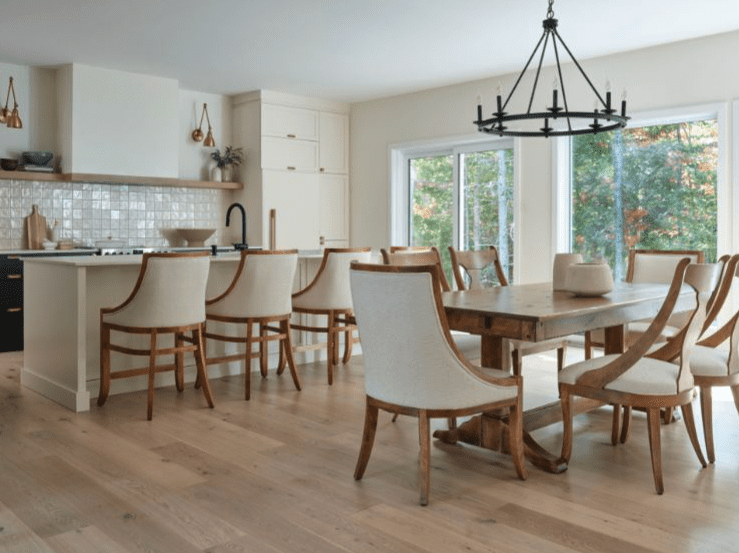What can I do to prevent the coronavirus disease at home? Remind everyone in your household of the importance of practicing everyday preventive actions that can help prevent the spread of respiratory illnesses:
- Avoid close contact with people who are sick.
- Stay home when you are sick, except to get medical care.
- Cover your coughs and sneezes with a tissue.
- Clean frequently touched surfaces and objects daily (e.g., tables, countertops, light switches, doorknobs, and cabinet handles) using a regular household detergent and water.
Here, we are going to help you properly clean, sanitize and disinfect your quality wood furniture table tops and chairs.
“Cleaning refers to organizing and wiping down surfaces, like countertops, so that they appear neat and spotless.â€
“All-purpose cleaners are built to lift and remove visible smudges, spots, stains, and debris from surfaces.â€Â Cleaning products can potentially remove germs from surfaces (along with dirt and other organic material) and wash them away, but the goal of cleaning is about the look and feel.
While cleaners will help make your surfaces look nice and shiny, there are some places at home (like your kitchen counters, faucet handles, chair armrests, and doorknobs) where you want to follow up your cleaning with a sanitizer or a disinfectant. Cleaning by itself won’t kill germs like bacteria, viruses, or fungi.
This coronavirus seems to spread most commonly from person to person via respiratory droplets, according to the U.S. Centers for Disease Control and Prevention (CDC), usually between people who are within about 6 feet (1.8 meters) of each other. Transmission of the virus from contaminated surfaces has not yet been documented, the CDC notes, but current evidence does suggest the virus can remain viable “for hours to days on surfaces made from a variety of materials.”
Sanitizing vs. Disinfecting
The difference between sanitizing and disinfecting comes down to semantics. Both sanitizing and disinfecting aim to reduce the amount of contamination present on a surface by killing germs, but disinfecting—by definition—kills more germs than sanitizing. Product manufacturers and agencies like the EPA use the word “sanitizing†to refer to a solution or device that reduces the amount of germs on a surface by 99.9 percent or more—a level that’s considered safe by public health standards. They use the word “disinfecting†for chemical products that are designed to “kill virtually everything†on a surface.
“Sanitizing is necessary for surfaces that come in contact with food.â€
You don’t want to skip the step of cleaning before you disinfect, though. Dirt and organic material can make some disinfectants less effective, so cleaning is necessary before disinfecting in most cases. Using “all-in-one†antibacterial cleaners isn’t enough to disinfect unless you first remove visible dirt from the surface (basically, you’d have to clean everything twice).
Vinegar
Acetic acid (a.k.a. white vinegar) can act as a disinfectant that can destroy some bacteria and viruses. … Household natural sanitizers like lemon juice and vinegar reduced the number of pathogens to undetectable levels. Vinegar can inhibit growth of and kill some food-borne pathogenic bacteria.
Vinegar can be used as a safer bleach alternative for some applications, such as cleaning, and research has shown it can be affective against some bacteria and viruses, including the flu. It is also biodegradable. Vinegar is not a registered disinfectant, however, and does not kill dangerous bacteria like staphylococcus.
Soap and water
Regular soap and water clean germs away rather than killing them, but that’s still a key step in reducing infection, the CDC points out. Washing your hands with soap and water is one of the main recommendations for limiting the spread of the novel coronavirus, since it seems to spread primarily from person to person via respiratory droplets, which are often found on our hands and easily transferred to our faces.




